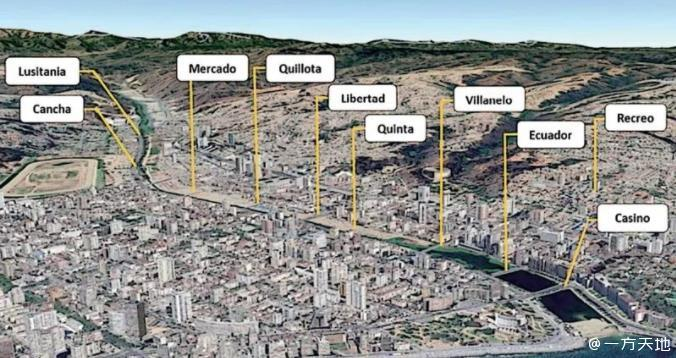A Valuable Tool For Bridge Information Management! Brim Technology Revives Old Bridges
BIM technology first emerged in the construction industry, with the prefix "B" (Building) initially referring only to general civil buildings. Nowadays, BIM technology is no longer limited to civil buildings and has been widely applied and developed in infrastructure. Specifically, in terms of bridge engineering, some scholars refer to the information modeling technology of bridges as "BrIM" (Bridge Information Modeling), and the Federal Highway Administration of the United States has proposed the OpenBrIM standard specifically for bridges. BIM technology has led to significant changes in the working methods of various stages throughout the entire lifecycle of bridges.

01
Why develop BrIM
There is no essential difference between BIM and BrIM in terms of technology, but if we delve deeper into this issue, we will find that the development of bridge engineering is mainly horizontal, that is, continuous growth along the direction of bridge spans; And the building starts from the bottom and rises infinitely vertically. In addition, the constituent elements of bridges are relatively simpler compared to buildings. So, BIM technology in the field of architecture includes more content, such as electromechanical, pipeline engineering, etc. From the perspective of development motivation, we urgently need to enter the digital age.
Imagine a bridge built forty or fifty years ago, it would be very difficult for us to find the design drawings from that time. For example, if you want to simplify the previous design standards, it is almost impossible to find the previous bridge data. Given this situation, fully tap into the potential of computer technology, transform current applications into fully digital transmission, and use digital language to express various information throughout the entire bridge lifecycle, shifting from "accounting" to more value-added engineering.
In 2014, McGraw Hill Construction conducted a survey showing that 90% of housing construction uses BIM technology, mainly rectangular building grids and geometric layouts defined by floor systems, while applications on bridges are rare. Upon investigation, some people believe that early bridge engineering was oriented towards transportation and required horizontal construction, with geometric shapes often defined by horizontal alignment, vertical profiles, and cross slope. But the fundamental reason is that information within the industry cannot be effectively communicated and exchanged. For example, the BrIM application has lost a lot of information from design, manufacturing, construction, and finally delivery to the operation and maintenance party, making it impossible to continue using this information for communication and collaboration. The US federal government recognized this issue and began to decide to establish a set of data standards for bridge engineering, which will cover the entire lifecycle of the bridge
All data is effectively integrated together to ensure that errors are no longer missing during the transmission process.
In order to better promote BrIM, the US federal government hopes to establish an electronic archive for each bridge, with a focus on effective interaction of information among multiple stakeholders, not only limited to the initial design stage of the bridge, but also including the later detection and evaluation process of the bridge.
02
Information management of old bridges
In past bridge projects, information management was usually carried out using two-dimensional CAD drawings. But today, a new tool is applied to bridges called the Bridge Information Model (BrIM), which can help parties collaborate more efficiently. This tool was applied for structural analysis and detection diagnosis on 10 bridges in Chile. Experience has shown that BrIM enables all parties involved in project maintenance and operation to communicate and collaborate smoothly on virtual models, making it a valuable tool for information management.
Many ancient and historic bridges are still in service around the world. Throughout the entire service life of bridges, due to various factors, aging bridges are increasingly experiencing deterioration and failure. Therefore, the importance of bridge management systems is increasing day by day, ensuring operational safety through good maintenance. At the international level, research on new technologies has been carried out to achieve comprehensive management of bridge related projects.
The use of BrIM is based on intelligent representation of structural components, which carry detailed and necessary information for all stages of the bridge lifecycle.
As a case study, in Chile, more specifically, in the city of Binia Delma, 10 bridges were affected by the earthquake on February 27, 2010. However, due to a lack of maintenance, they also experienced some damage before. This is the reason for the implementation of the "Analysis and Structural Diagnosis of Bridges in Binyadelma City" project. In this project, there are participants from various parties, including surveyors, structural engineers, geotechnical engineers, contractors, and clients.
These 10 bridges are all old structures, and different issues have been discovered, such as a lack of detailed records in the geometric details of the bridges. From the initial plan to the new geometric measurements in the CAD drawings, it reflects the unstable information management among different stakeholders in the project.
In this work, the change in working methods is reflected in the use of tools, such as from CAD to general and parametric models. The research findings indicate that Bridge Information Modeling (BrIM) is a new and appropriate method for improving accuracy, collecting post construction data and 3D modeling, allowing for effective management, maintenance, and operational information among different stakeholders.

In the earthquake that occurred on February 27, 2010, the road infrastructure of the community in Binia Delma was damaged. Among the affected structures, there is the oldest bridge in the city of Binya Delma. Through visual inspection, it was found that the structure of these bridges has deteriorated to varying degrees.
Within the framework of reconstruction, restoration, and ongoing construction plans, maintenance projects that directly affect the availability of bridges caused by earthquakes have been put on the agenda. In the entire framework, it is divided into four stages: planar measurement and preliminary evaluation, collection of background information and development analysis of the structure, diagnosis and structural evaluation, and design authority scope.
One of the main focuses in the structural diagnosis and evaluation stage is to collect and analyze information on the current state of the bridge, as complete planar and geometric measurements are required to reflect the construction status in detail. In addition, the data obtained from the previous stage should be represented in appropriate proportions on CAD drawings, using floor plans, elevations, sections, and detailed drawings. Finally, structural assessment and diagnosis should include both structural and functional aspects.
Therefore, it is necessary to consider sufficient accuracy and the level of collection of completion data. Although it is necessary to use CAD floor plans as the first requirement, the BrIM technology method is incorporated by elaborating on the three-dimensional parametric model.
The process of establishing a bridge completion model is based on the following steps.
Firstly, measure and record all components of the bridge on site, such as piers, abutments, beams, decks, railings, and others. This is done to achieve good accuracy and avoid adverse geometric shapes in the next step.
Secondly, analyze all the information collected on site and refine the 3D parameterized model using BrIM software to generate the required plans, elevations, sections, and details.
Finally, the bridge model is presented in the form of Industrial Foundation Class (IFC) standards, which are industry consensus standards for BrIM and related data exchange protocols. In this way, digital files can be imported into various BrIM computer programs for further processing, such as structural analysis programs.
03
Refine the parameter model after completion
Using 3 out of 10 bridges as an example, explain the refinement process of the parameter model. The initial geotechnical environment at the bridge site was integrated with files generated in the Civil 3D program. This extension allows for the extraction of the ground and some representative geographical environments at the bridge site.
The modeling work starts with on-site information and measurement data, grouping different components representing bridges by category, such as bridge decks, piers, etc. The modeling of the structure is done using Revit tools.
The Creo Bridge, also known as Chorrillos Bridge, is used by vehicles and pedestrians and is still in normal use. The bridge consists of 5 steel longitudinal beams, with a total of 5 spans.
The Quinta Bridge is a structure used to connect the north (North 1st Avenue) and south (Aleggi Street) of Vinadelma in the Valparaiso region, allowing only pedestrians to pass through the Marga Marga estuary. The bridge is supported by a reinforced concrete slab on two longitudinal beams of the same material, with a total of 8 spans.
The Quillota Bridge, which allows vehicles and pedestrians to pass through the Marga Marga estuary, is one-way and has three lanes facing south. The entire structure is similar to Quinta Bridge, with a reinforced concrete slab supported on longitudinal beams of the same material, spanning a total of 8 spans.
After using BrIM software to illustrate three-dimensional parametric models, it is also easy to exchange this information with programs in the structural field through open formats such as IFC. A complete model was created for each bridge in the example using SAP2000 v23 finite element software.
Information models can become a valuable tool to facilitate information management among different stakeholders in bridge projects, regardless of their type.
It is necessary to base the representation and drawing of bridge components on the use of software and a structured experiential foundation. When creating a 3D model, the advantage lies in the ability to view all elements as a whole, allowing for detailed exploration of the model from the arrangement of various views. This can facilitate the process of "value engineering", including improvements made by professionals involved in project conceptualization.
It is very useful and easy to use an open format like IFC when exchanging information between different professionals in a project.
It can be clarified that one of the difficulties encountered in generating the completed model is the lack of original files for bridges, such as floor plans, as they are too old and information is not properly protected. Therefore, as mentioned in this work, it is necessary to conduct on-site geometric measurements of all bridges to advance the development of completion drawings and 3D modeling. Through this information, it is possible to share and collaborate with the field of structural engineering, thereby resolving doubts and correcting errors in the models of different bridges studied.
In this work, it is necessary to first describe the current situation of 3D modeling of bridges, create parameterized models, and manage different information among various parties involved in project maintenance and operation. All of these are based on the latest research in the development of new technologies, which is to establish a working method called BrIM.
Original link: https://www.xianjichina.com/special/detail_528768.html
Source: Xianji.com
The copyright belongs to the author. If there are any issues related to the content or copyright of your work, please contact us in a timely manner.


